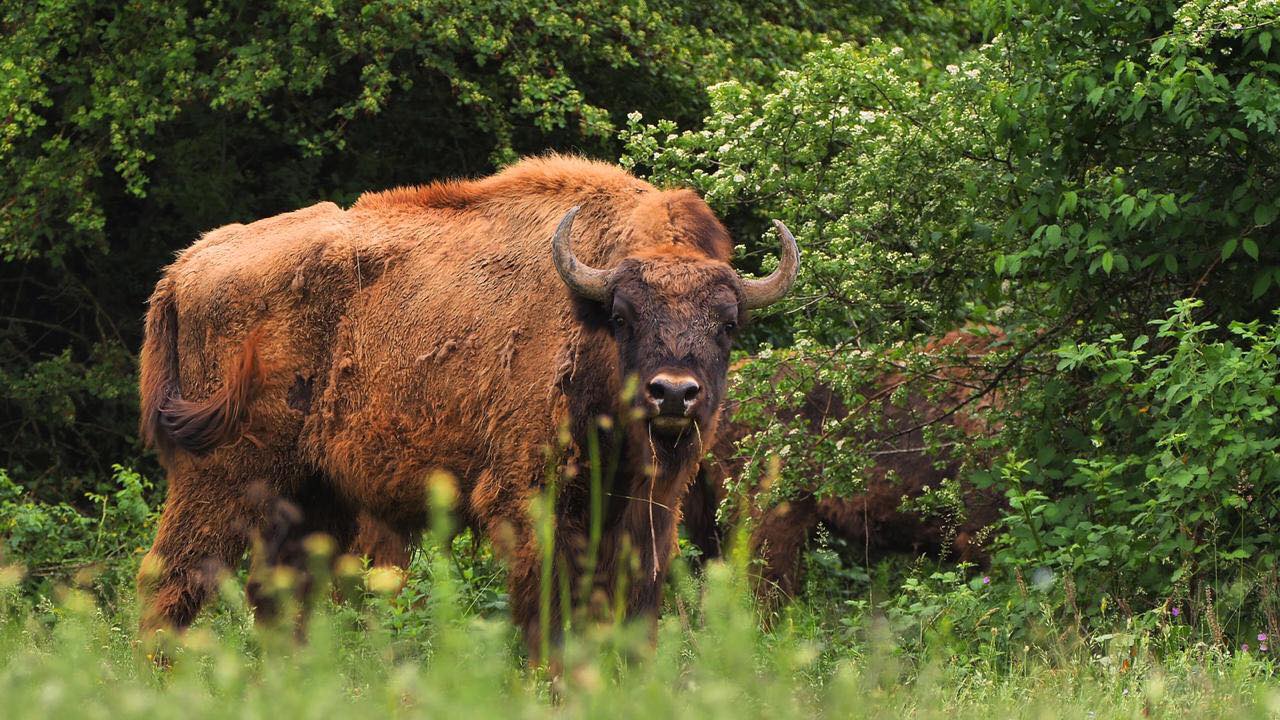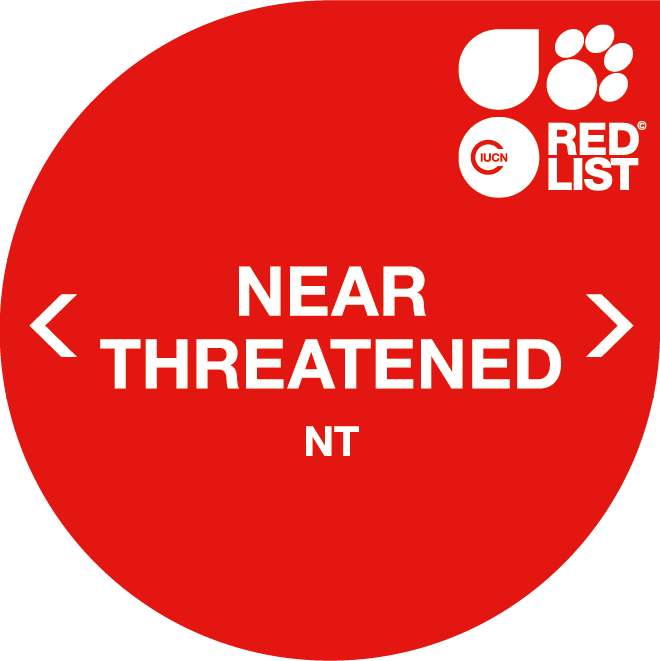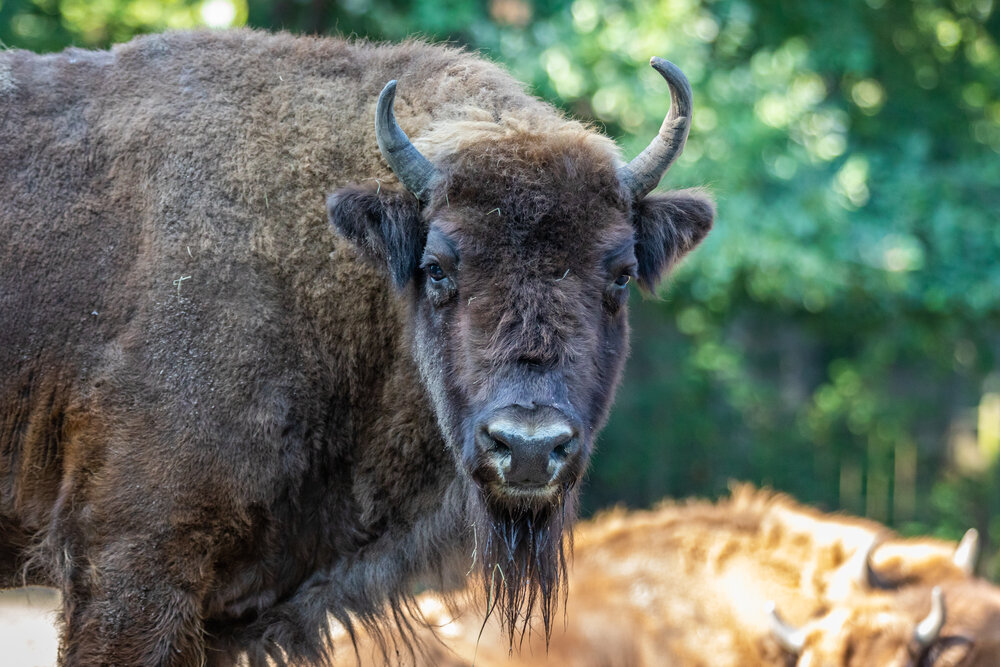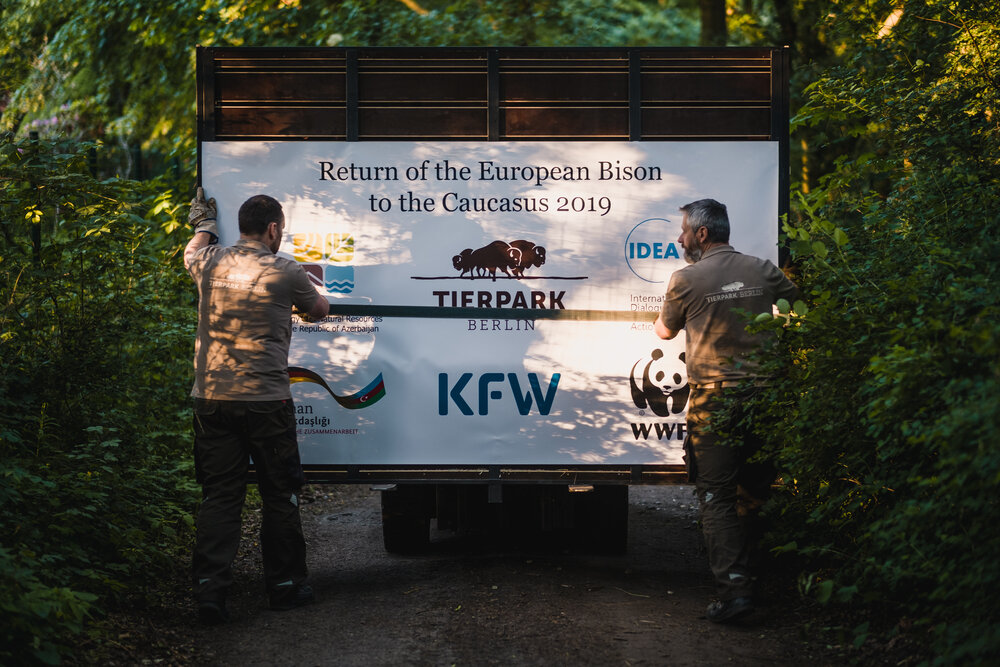
European bison
Tierpark and Zoo Berlin contribute to the conservation breeding and reintroduction of the European bison in Eastern Europe.
Project facts
- Project partner
World Wildlife Fund (WWF)
- Species
European bison (Bison bonasus)
- Bedrohungsstatus laut IUCN
Near Threatened (NT)
- Project location
Shahdag National Park, Azerbaijan
- Greatest threat
Previously hunting by humans; now primarily habitat loss
- Response
Implementing breeding programmes in captivity, reintroducing individuals into the wild and creating a robust population in Europe
Threat Categories of IUCN


European bison in Berlin
The European bison is the largest land mammal native to Europe. Zoo Berlin has a special relationship with these majestic bovines, as it has been home to the bison since 1872. The Tierpark has also been making a considerable contribution to the species’ conservation ever since it opened in 1955. By 2020, more than 200 European bison had been born at Berlin’s two zoos.
A great loss for Europe
European bison were originally found across large swathes of Europe, moving in herds through deciduous, mixed and coniferous woodland. They could also be seen on open meadows and in forest glades. However, habitat loss and fragmentation, as well as hunting by humans, caused a drastic decline in their numbers. With the shooting of the last wild bison in the Caucasus in 1927, this species was completely wiped out in its natural habitat.
Zoos to the rescue
It was thanks to the presence of a few individuals kept in zoos that the European bison was saved from total extinction. In order to ensure its survival, a group of European zoo directors and scientists founded the Society for the Protection of the European Bison in August 1923 at Zoo Berlin. Through coordinated breeding efforts, the formation of herds, and targeted reintroduction, they were able to bring this species back from the brink.
The call of the wild
In addition to participating in breeding programmes, Berlin’s zoos are also making an active contribution to the reintroduction of these bison in Eastern Europe. In 2018, they participated in a WWF Romania project that returned four bison to their original Romanian habitat. Two of those bison were born at Tierpark Berlin. Since 2019, the focus has been on the reintroduction of European bison in Azerbaijan. There, the animals are being prepared for their upcoming release at a reintroduction centre in Shahdag National Park.
From the Tierpark to the Caucasus
The project is a joint initiative of Azerbaijan’s Ministry of Ecology, the WWF, EAZA, and other national partners on the ground. Four bison from European zoos arrived at the reintroduction centre in Shahdag National Park in the autumn of 2019, following an initial acclimation period at Tierpark Berlin. In 2020, five more bison were transported safely to Azerbaijan. One of them was our very own two-year-old bull Beppo, born at Zoo Berlin.
Conservation that works
Since June 2020, Berlin’s zoos have also been working with the IUCN SSC Bison Specialist Group to develop a Europe-wide conservation action plan for the bison. Thanks to the project’s long-term conservation management efforts, there are 6,200 European bison living in the wild as of 2021. Zoo and Tierpark Berlin will continue to participate in this project.
Photos: © WWF





